The journey to proficiency in archery is not a one-size-fits-all process. Whether aiming to hit the bullseye with precision or to just enjoy the sport recreationally, reaching a comfortable skill level can take a few months of regular practice. The rate at which you progress will depend on factors such as the frequency of practice, the quality of coaching, and your natural affinity for the sport.
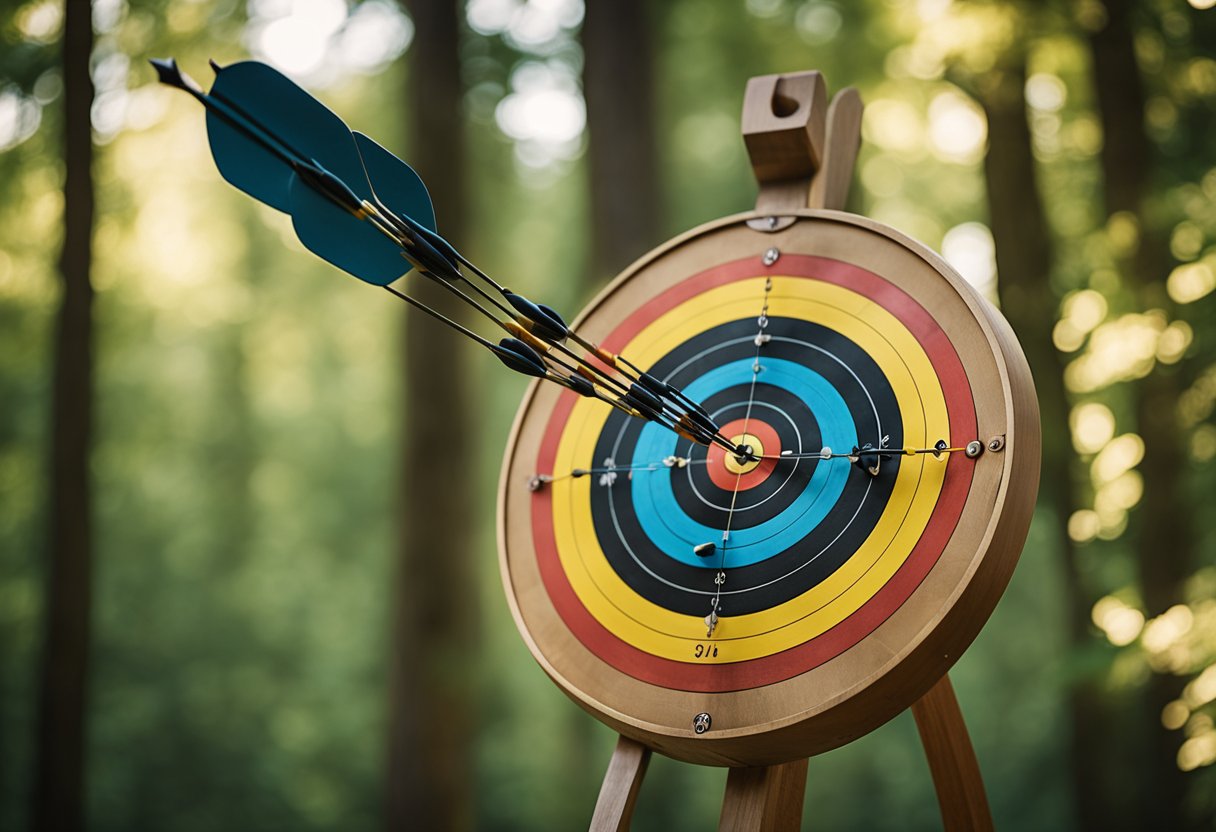
Understanding the basics is crucial, and with consistent training, you might find your arrows flying true more often than not.
However, mastery is a long-term goal that could take years of dedicated practice. The pursuit of improvement in archery is an ongoing process—one that melds technique, patience, and enjoyment.
Key Takeaways
- Regular practice is essential to improve in archery.
- Mastery in archery is a result of long-term commitment.
- Enjoyment of the sport can influence your learning curve.
Understanding Archery Fundamentals
To excel in archery, it’s essential to grasp the basics, from the gear you’ll use to the stance you’ll take. This solid foundation aids in building skill and ensures a safe and enjoyable experience.
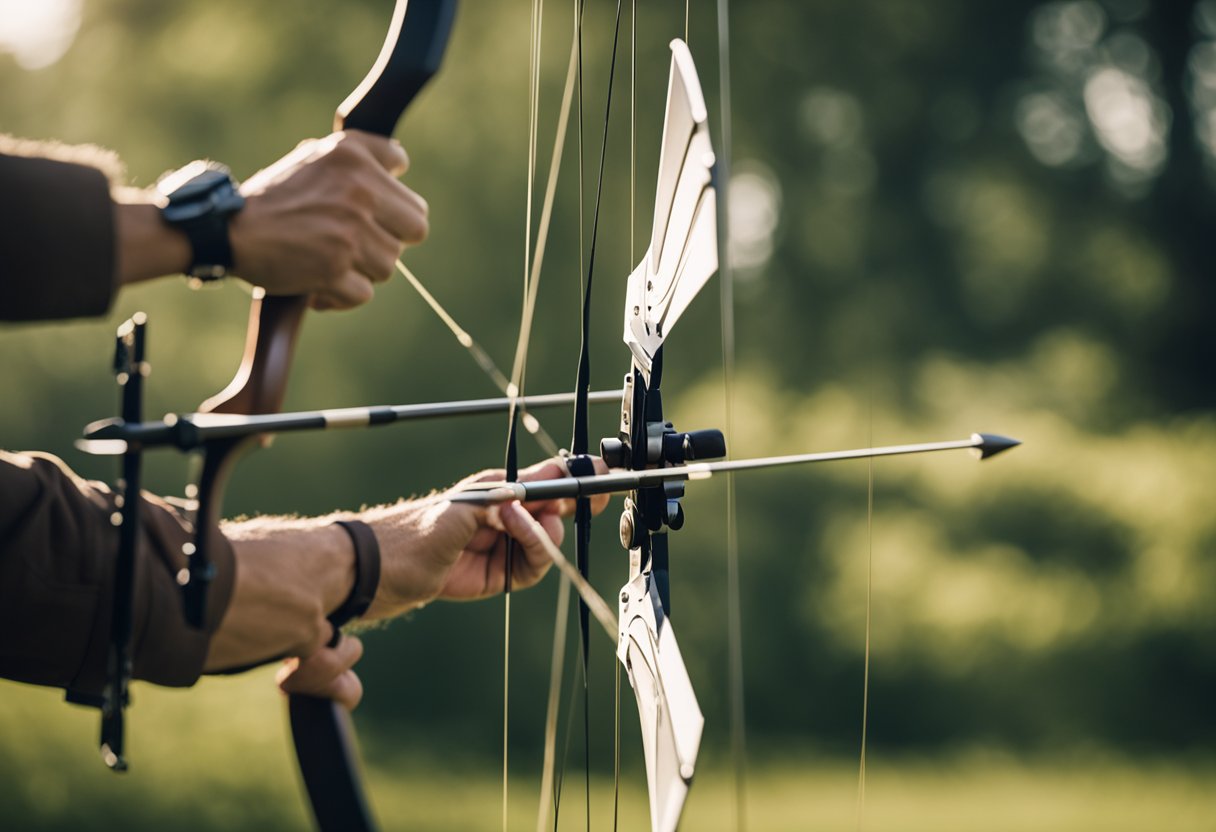
Equipment Overview
In archery, your equipment is critical. You’ll need a bow—either a recurve or compound—and the right arrows for your bow type and size. For protection, invest in an arm guard, finger tab, and chest guard. When selecting equipment, it’s important to choose items that are suited to your skill level and physical capability.
For more details on equipment types and choices, visit Archery Explorer.
Basic Form and Posture
Your form and posture underpin your shooting technique. A correct stance involves standing perpendicular to your target with your feet shoulder-width apart. Once in position, focus on your grip, nocking the arrow, and drawing the bowstring with a smooth release.
Every aspect from your bow grip to your follow-through impacts accuracy. Incorporate basic exercises to constantly improve your shooting form.
Safety and Starting Out
For a safe start in archery, undergo beginner instruction, ideally through a one-on-one or group lesson. Learn to handle your equipment safely and be aware of your surroundings to avoid accidents. Your initial focus should be on safety protocols and basic shooting. This foundational knowledge ensures a safe and fun introduction to the sport.
Terminology and Discipline
Understanding archery terminology helps you to learn faster and communicate effectively with instructors and peers. Terms like anchor point, let-off, and bow sight are part of the discipline’s vocabulary. Adopting the discipline of archery also means regular practice, patience, and dedication. This mindset is key to mastering the intricacies of archery basics.
Setting Realistic Goals
As a beginner, setting achievable goals for your practice is important. These goals might be related to technique refinement, consistency, or increasing your shooting distance. Track your progress and adjust your goals to stay motivated and challenged. Remember, excellence in archery requires time, and improvement comes with dedication to the sport.
- Ensure your equipment suits your skill level and physical capabilities.
- Adopt a correct stance and focus on your bow grip and release technique.
- Prioritize safety in all aspects of learning and practicing archery.
- Familiarize yourself with archery terminology and embrace the discipline it requires.
- Set realistic goals and practice regularly to improve your skills.
Developing Your Skills
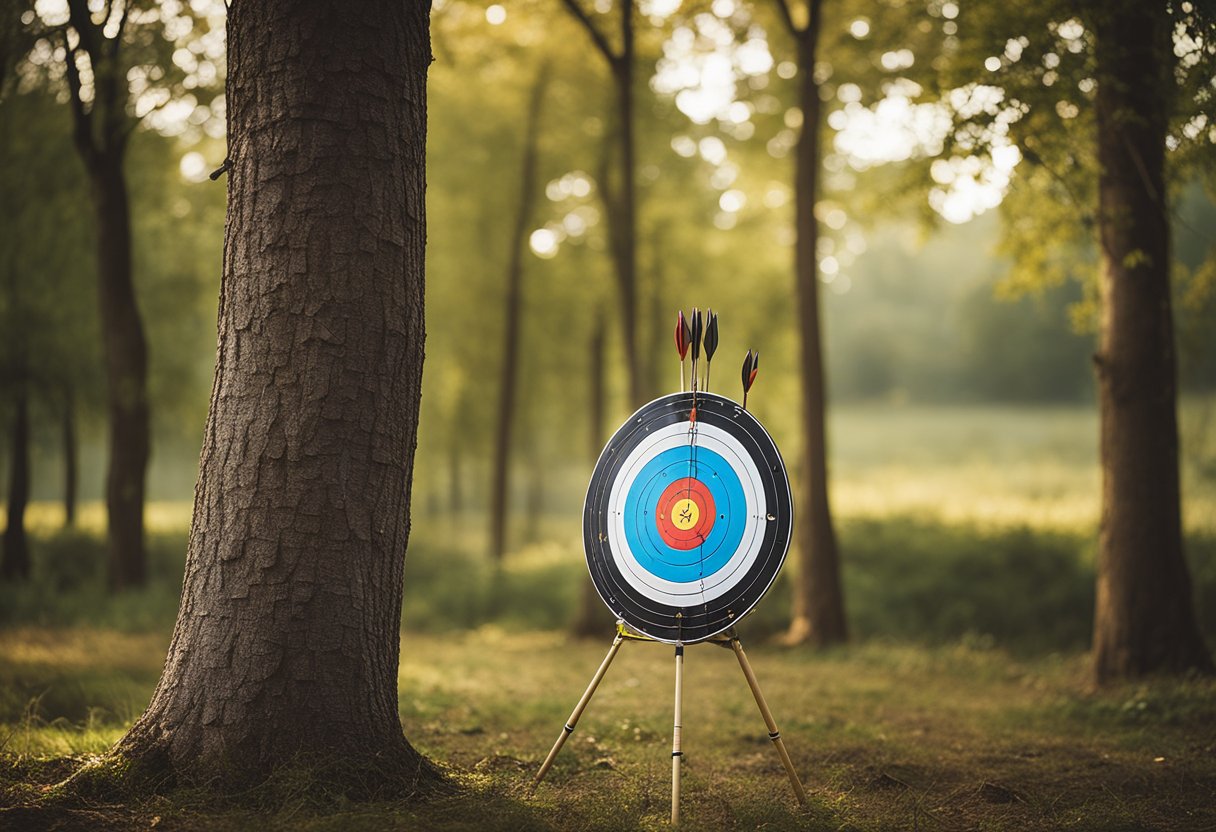
To excel in archery, dedicating time to develop key aspects of your form and shot process is crucial. A strategic approach enhances muscle memory and fine-tunes your technique, allowing for consistent improvement across various skills.
Consistent Practice Routines
Your pathway to becoming better at archery involves establishing consistent practice routines. Practicing often is essential, with dedicated sessions several times a week. These sessions should blend various drills aimed at improving both your form and focus, ensuring each aspect of your shot process becomes second nature.
- Monday, Wednesday, Friday: Focus on form and technique
- Tuesday, Thursday: Strengthening and endurance exercises
- Weekends: Long-range shooting and accuracy drills
Technique Refinement
Refining your technique requires a mindful approach to each movement in your shot process. It’s about the quality of practice, not just the quantity. Fine-tune your technique by breaking down the shot sequence into smaller parts and perfecting each one through repetitive drills.
Increasing Strength and Endurance
Strength, especially in upper body muscles, plays a vital role in maintaining form and preventing fatigue. Incorporate specific exercises to build endurance, which will allow you to practice longer and with greater consistency.
| Day | Exercise | Reps |
|---|---|---|
| Mon, Wed | Pull-ups | 3×10 |
| Tue, Thu | Push-ups | 4×15 |
| Fri | Resistance Band | 5×12 |
Targeting Accuracy and Distance
Focus on targeting accuracy and increasing distance progressively. Begin with close-range targets, where you can practice your sight alignment and shot execution without the added variable of distance. As you gain confidence, incrementally increase your range.
Mental Game and Concentration
Mastering your mental game is just as important as physical prowess. Practicing concentration and breathing techniques can significantly enhance your focus, which is critical for successful archery shooting. Regularly train your mind to stay calm and collected, even under pressure.
Progression to Advanced Strategies
Once you are experienced and comfortable with intermediate techniques, you can progress to advanced strategies. This includes mastering different bow types, learning how to read wind conditions, and perfecting variable terrain shooting. Make sure to learn to recognize when to execute a let-down, if a shot doesn’t feel right.
Practical Shooting Experience
Gaining proficiency in archery involves not only consistent practice but also navigating different environments and tools that can influence your shooting experience. It’s crucial to adapt to various shooting settings, explore different types of archery, and embrace competitions as part of your development.
Indoor vs. Outdoor Shooting
Indoor archery provides a controlled environment, free from weather variables, allowing you to focus on your technique and accuracy at various distances.
Outdoor shooting introduces factors such as wind and lighting, offering a more challenging practice setting that translates well to competition scenarios.
Exploring Different Archery Types
Archery has several disciplines, each with unique nuances. Traditional archery hones your instinctive shooting skills without relying on modern accessories, whereas target archery and field archery test your precision and adaptability in different formats.
Embracing 3D archery elevates your experience to mimic real-life hunting scenarios.
Participation in Archery Competitions
Competitions are a milestone to measure your skills. Archery competitions push you to perform under pressure and provide opportunities to observe and learn from experienced archers.
Training with Tools and Accessories
Effective practice includes familiarizing yourself with archery equipment such as bows, arrows with proper fletching, and tools like a mirror or sight. These accessories are vital for fine-tuning your aim and enhancing your overall performance.
Learning from Feedback and Adjustment
Improvement is a continuous process of action, feedback, and adjustment. Record your practice sessions with a camera or use a mirror to view your posture and movements in real-time, then apply immediate adjustments to fine-tune your skills.
Finding a Suitable Archery Range
Identify an archery range that is convenient and accommodates your practice needs. An ideal location should offer the right space for the type of archery you’re pursuing, whether it’s up-close target practice or long-range shooting. Here are some factors to consider for a range:
- Accessibility: How easy is it to reach the range?
- Facilities: Does it have indoor and outdoor options?
- Distances: Are there varied distances available for different practice sessions?
| Range Type | Description | Benefits |
|---|---|---|
| Indoor | Enclosed space with set target distances | Control over environmental factors |
| Outdoor | Open space, may include natural settings | Realistic variables for comprehensive training |
When you integrate these elements into your archery practice, you’re setting yourself up for a well-rounded development in the sport.
Long-Term Commitment and Enjoyment
Embracing archery as a long-term pursuit can enhance your skills and bring joy to your life. Integration into the archery community and consistent practice are key for your progression.
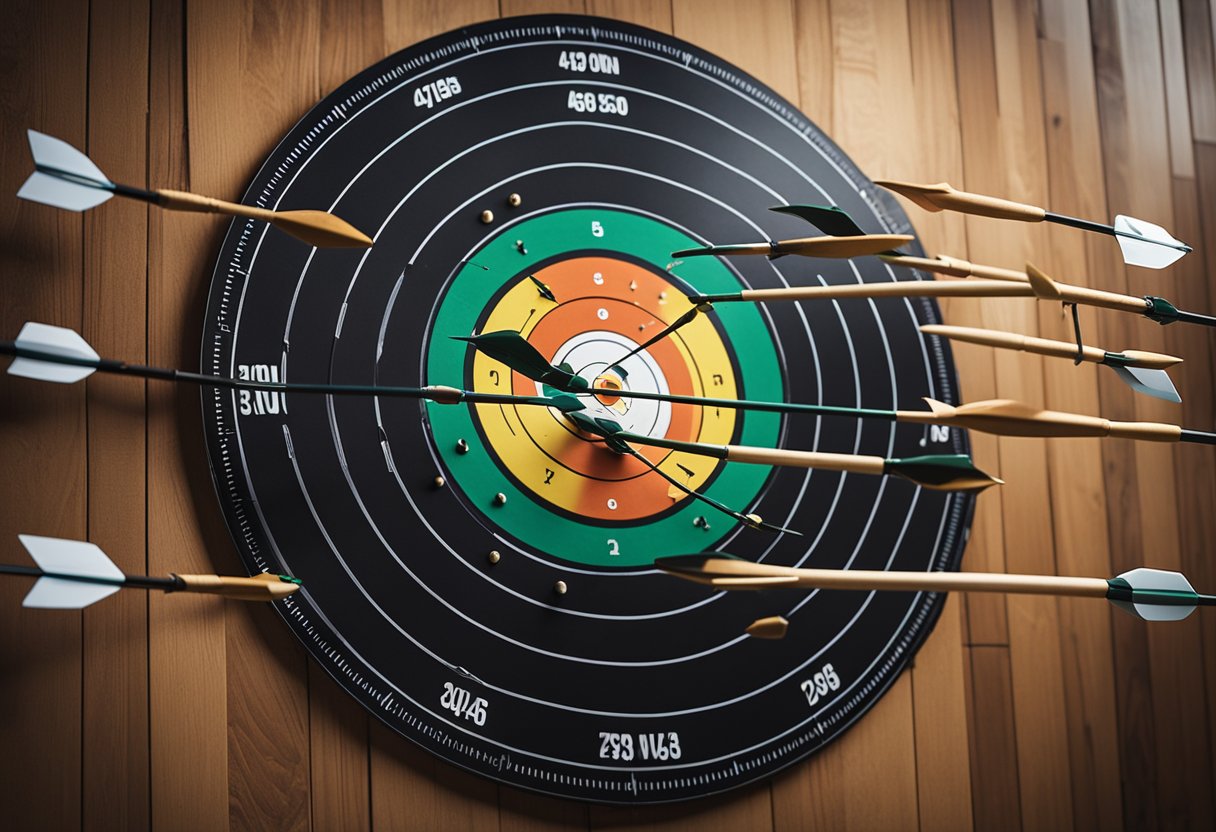
Joining an Archery Community
Connecting with an archery community is a vital step in your journey. By intertwining the social aspect with your discipline, you gain access to support, friendship, and shared experiences. Communities often provide valuable archery lessons and other learning opportunities, reinforcing your dedication to the sport.
The Rewards of Diligent Practice
The time invested in practice directly correlates with becoming a skilled archer. It’s a rewarding experience that does more than just sharpen your aim; it builds confidence and patience.
| Practice Interval | Expected Skill Advancements |
|---|---|
| Daily | Quick improvements in form and precision |
| Weekly | Steady progress and technique refinement |
| Monthly | Increased mastery over longer-term challenges |
Sharing and Teaching Archery
Once you’ve developed proficiency, sharing your passion becomes a new source of enjoyment. Teaching others not only gives back to the community, but it also enhances your own understanding of archery.
Continual Learning and Challenges
Even as a skilled archer, there’s always more to learn. Archery presents an endless array of techniques to master and challenges to overcome, fueling the fun in your ongoing dedication.
The Lifelong Journey in Archery
Archery is not merely a sport; it’s a lifelong journey. The dedication of your free time to continuous learning and enjoyment opens a path to mastery and personal fulfillment. Keep the following in mind as you embark on this path:
- Take joy in small victories and improvements.
- Remain open to new strategies and ideas.
Remembering these tenets will help you maintain your enthusiasm and commitment to archery.
Conclusion
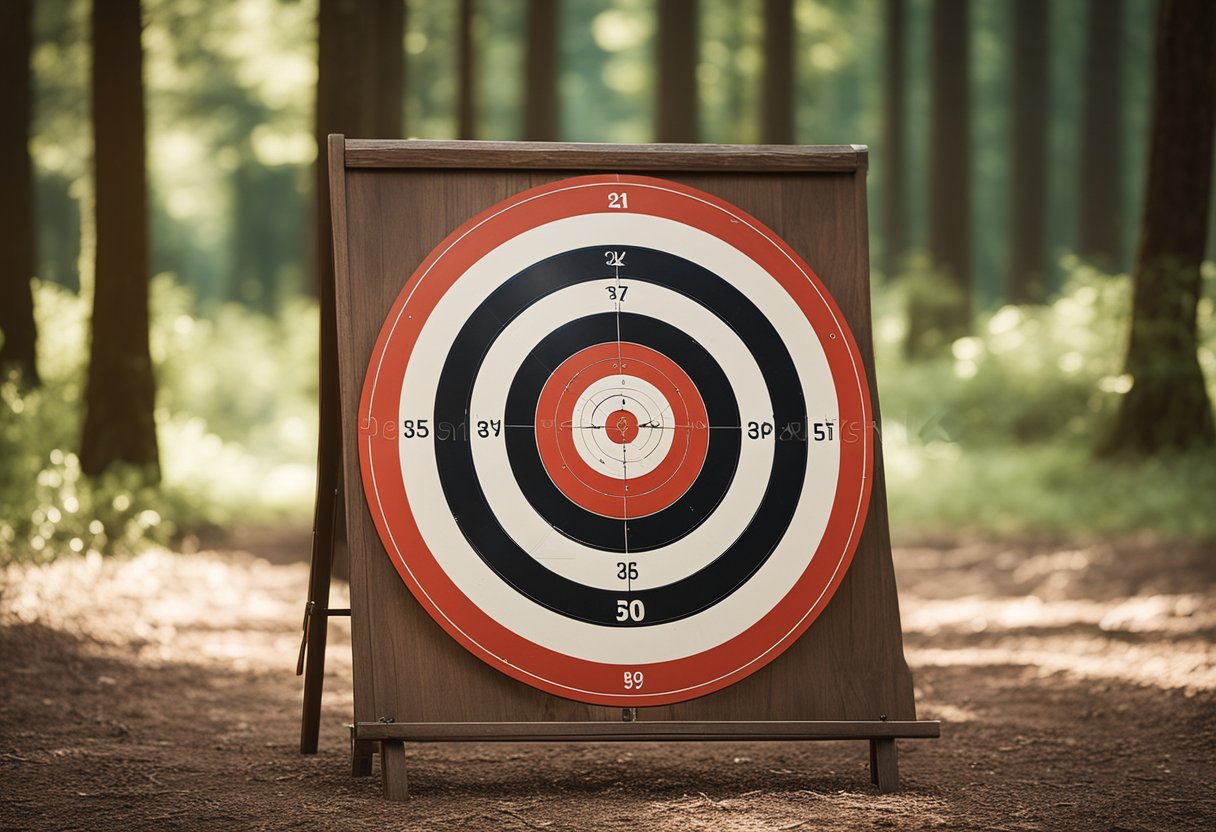
Becoming proficient in archery requires consistent practice and dedication. The amount of time it takes can vary widely between individuals.
- Month 1: Grasp the basics; focus on your stance and grip.
- Months 2-6: Develop consistency; shoot regularly.
- Months 7-12: Refine your technique; analyze your progress.
- Months 13-24: Solidify your skills; participate in competitions if desired.
- Month 25+: Continual improvement; adapt new strategies and equipment.
To expedite your learning curve, consider these steps:
- Enroll in a beginner’s course.
- Maximize the number of arrows shot during practice sessions.
- Absorb knowledge by reading, learning, and watching relevant archery content.
Your journey to archery mastery is unique, and patience is key. Enjoy the process and celebrate incremental achievements.
